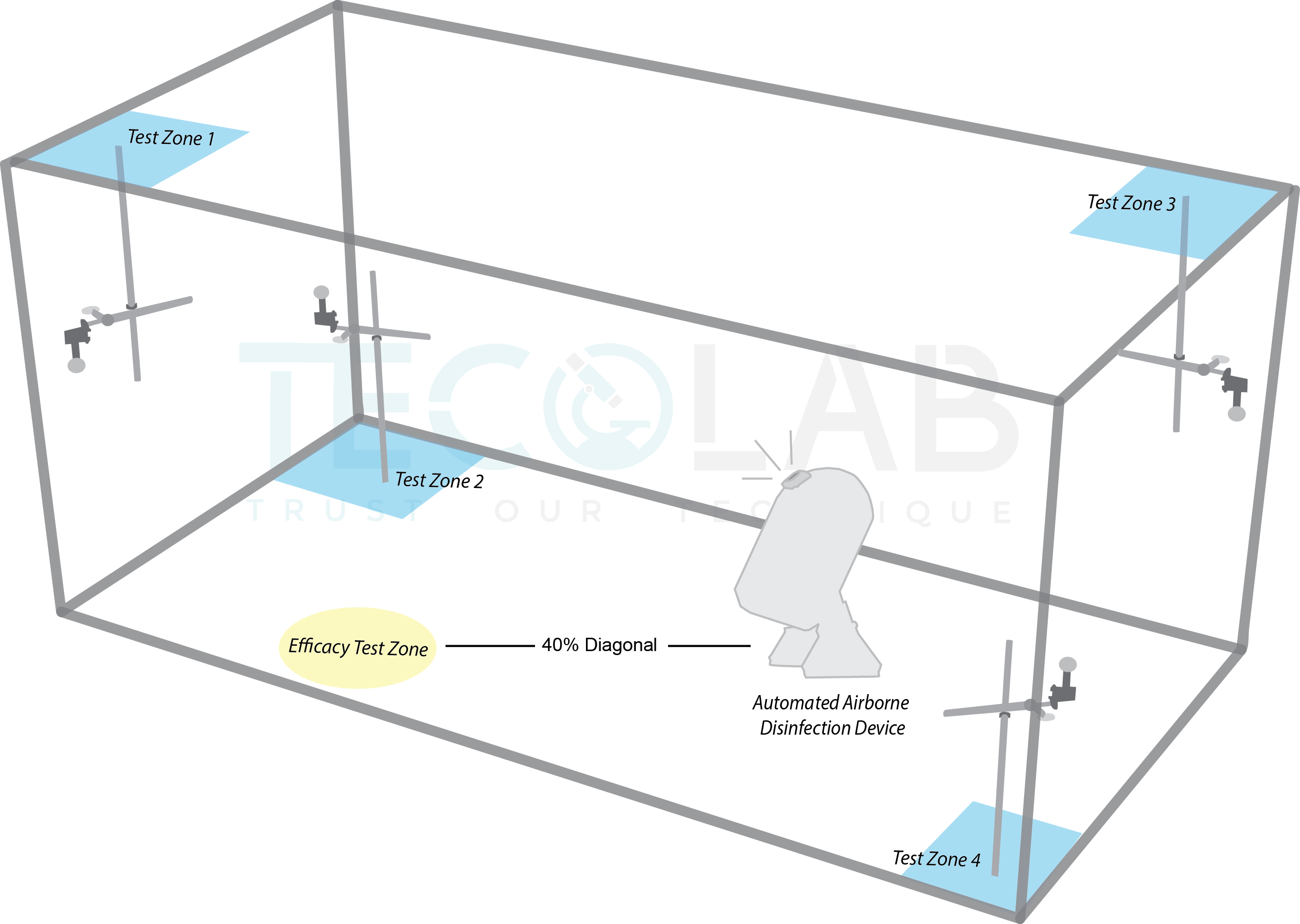


The purpose of distribution test is to evaluate the effectiveness of your device distributing its synergistic disinfectant solution in an enclosed space.
Pick the target area of disinfection system application:
Choose antimicrobial activity spectrum:
Δ Minimum requirement activity * Applicable in food industry area only
Aerosolization Disinfection Contact Time is pre-determined by manufacturers.
Interfering substances, or commonly referred to as soiling, are used to mimic organic substances found on human skin, surfaces, and instruments. These are the available soiling conditions according to the target area:
Medical Area:
Veterinary Area:
Food, Industrial, Domestic and Institutional Areas:
*Optional for manufacturers
Fill in the test request form and place an order via email at info@tecolab-global.com.
You can deliver the Airborne Disinfection System to us via courier and provide us the tracking code. We will monitor the delivery status and inform you when we receive the system.
Once we have received your Airborne Disinfection System, we will provide a tracking number to you. You can easily track the status of your request here.
Download your readily available test report online with just a single click using the link and password provided via email notification. We will receive a notification once you have downloaded the test report.
For safety purposes, the uploaded test report will self-destruct after 7 days.
In order to pass the test, the product shall demonstrate these log reductions in the medical area, veterinary area and food, industrial, domestic and institutional area.
Need assistance with your test report? Discuss your results with our microbiologists for more information.
